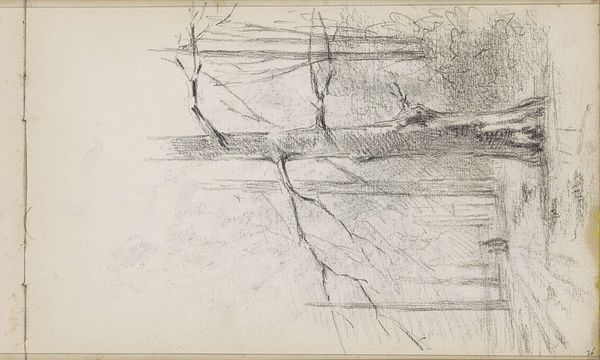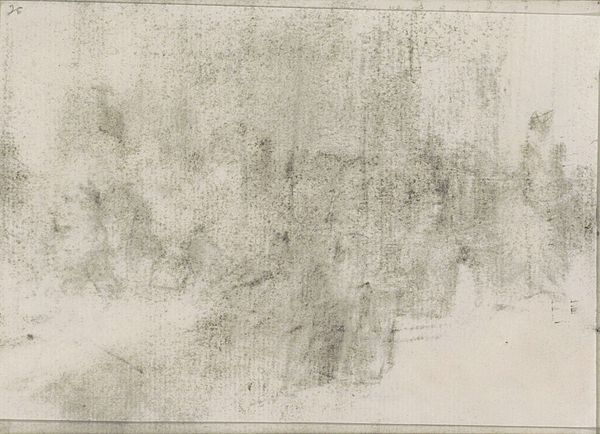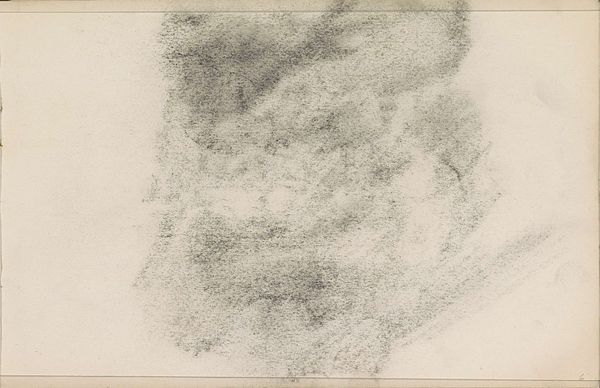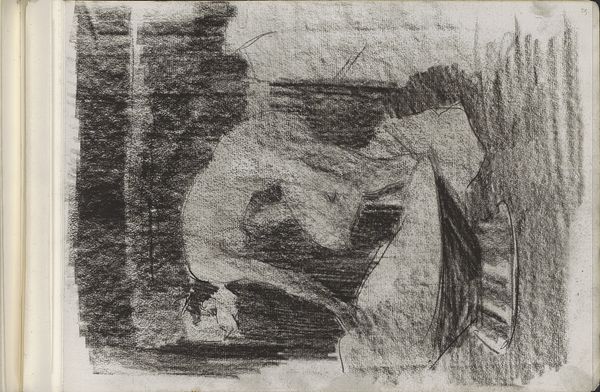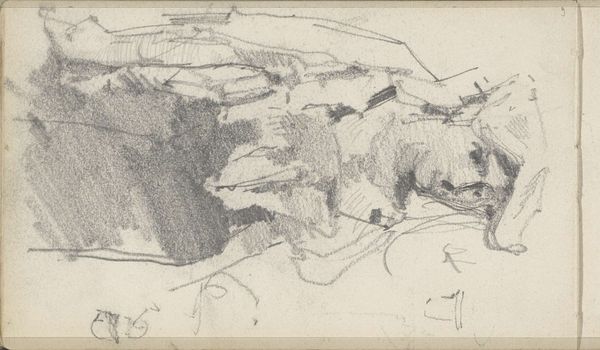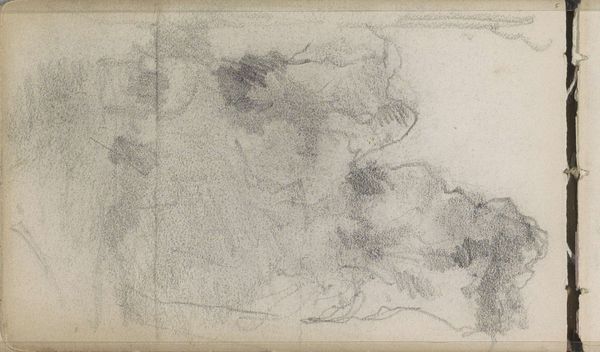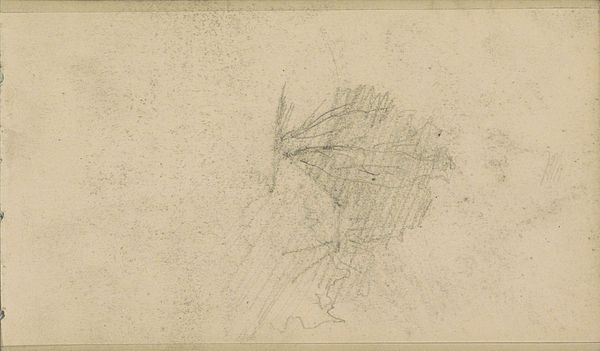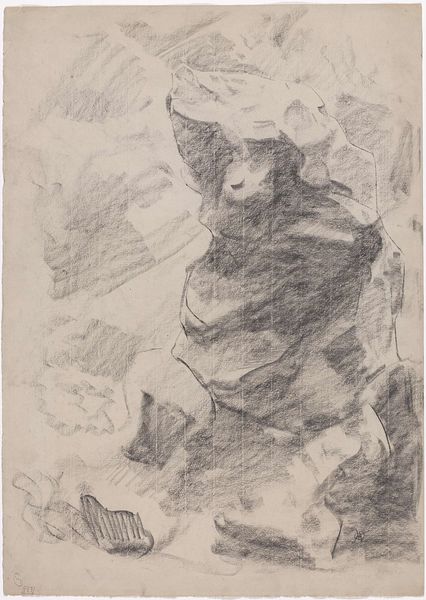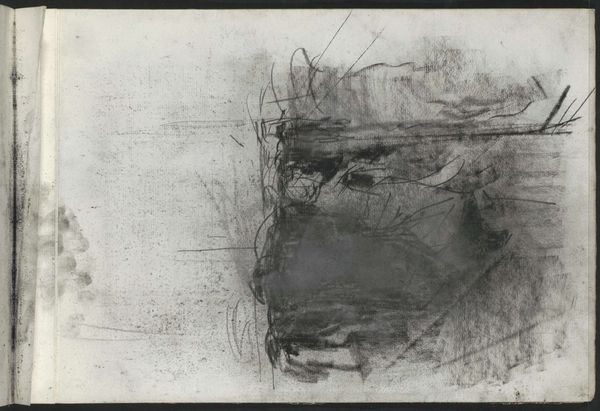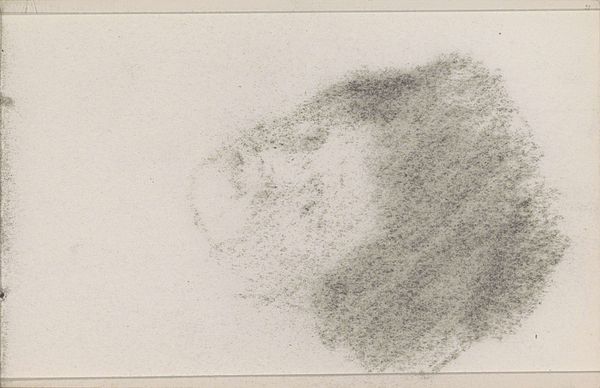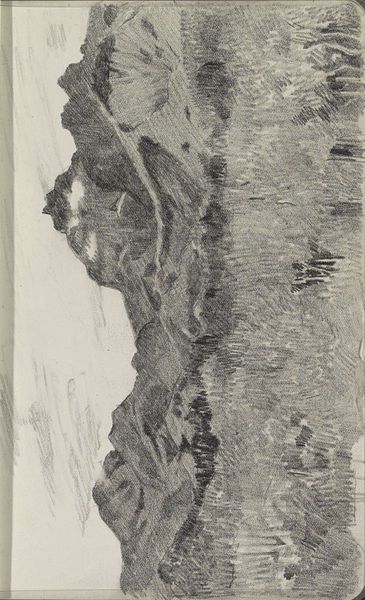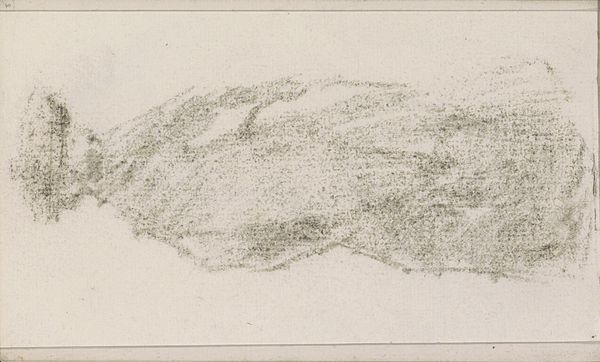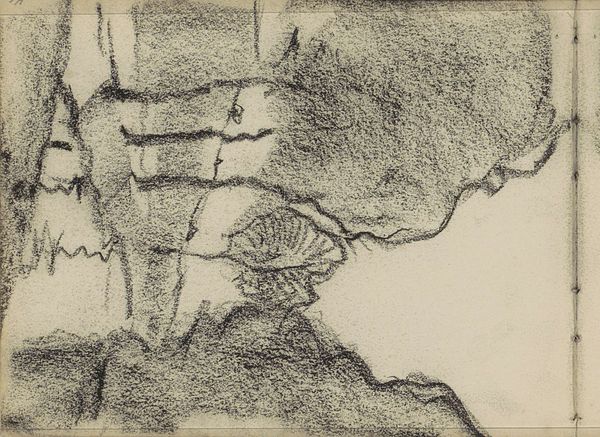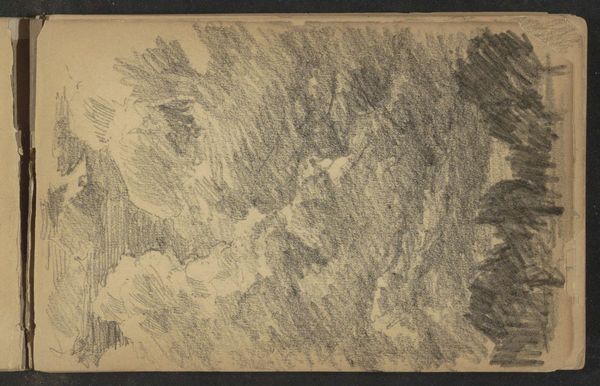
drawing, pencil
#
pencil drawn
#
drawing
#
pencil sketch
#
landscape
#
geometric
#
pencil
#
realism
Copyright: Rijks Museum: Open Domain
Editor: This pencil drawing, "Ingang van een groeve te Valkenburg" made in 1893 by Anna Catharina Maria van Eeghen, gives off a slightly claustrophobic mood due to the looming rock formations. What societal context might have influenced this piece? Curator: Considering Van Eeghen's background and the period, it's important to examine the growing interest in industry and natural resources. How might this drawing, showing the entrance to a quarry, be interpreted within the context of late 19th-century industrial development and its impact on the landscape? Editor: It's a pretty straightforward drawing. But quarries do alter the landscape significantly. Maybe the artist is attempting to draw attention to it in their own way. Do you think that the museum where it may have been displayed at that time would influence the reception of this piece? Curator: Absolutely. Museums were, and still are, spaces where narratives are constructed. A drawing like this displayed prominently could invite reflection on the social costs of industrial progress. Where it was displayed – art museum, historical society, trade organization – would influence interpretation of its message, conscious or not. Was it seen as progress or exploitation of nature? Editor: So the act of choosing to display it would create a statement on its own. I hadn't thought of it like that. It’s fascinating to think of how an artwork’s setting changes our understanding. Curator: Precisely. The display contextualizes it. What seems like a simple landscape sketch actually holds a mirror to the values and debates of its time. It’s an early form of visual activism, perhaps? Editor: Interesting. Thank you, that gave me a lot to think about! Curator: My pleasure. It is a rewarding study of landscape meeting historical inquiry.
Comments
No comments
Be the first to comment and join the conversation on the ultimate creative platform.
